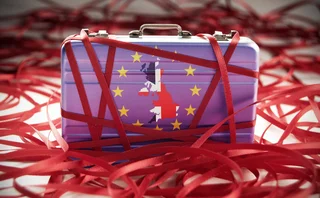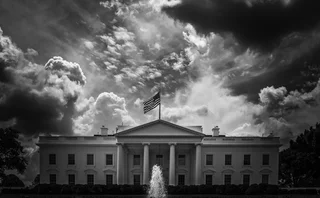
Chief risk and compliance officers increasingly vetting business activities
A new Economist Intelligence Unit/Navigant survey says the stakeholders in risk management are changing
LONDON - Chief compliance officers and chief risk officers are the main beneficiaries of a swing towards vetting business activities since the onset of the financial crisis, according to a new survey carried out by the Economist Intelligence Unit commissioned by Navigant Consulting's financial services practice.
There was an 11% gain of respondents saying chief compliance officers had unilateral authority to intervene and curtail specific business transactions. For chief risk officers the gain was 9%, followed by the corporate legal counsel and price verification group, both of whom scored 5% gains.
Conversely, the survey recorded a 4% drop in the business veto accorded to chief executive officers, while the influence of customer relationship managers also fell by 3% and the veto of the board and "sales/marketing" by 1% apiece.
Disclosure was expected by 72% of participants to be a major focus of future regulation. The report says better risk intelligence and communications are needed to inform sound business decisions.
The survey also said risk functions were expected to grow in size and closer towards the business activities than in the past, with a general shift towards having more stakeholder inputs into risk assessment and reporting.
The survey polled 180 financial professionals, 41% of whom were senior corporate executives (including chief risk officers and board members). Navigant has included the findings within a report, authored by John Schneider, managing director of its financial services consulting practice.
The report can be read here.
Only users who have a paid subscription or are part of a corporate subscription are able to print or copy content.
To access these options, along with all other subscription benefits, please contact info@risk.net or view our subscription options here: http://subscriptions.risk.net/subscribe
You are currently unable to print this content. Please contact info@risk.net to find out more.
You are currently unable to copy this content. Please contact info@risk.net to find out more.
Copyright Infopro Digital Limited. All rights reserved.
As outlined in our terms and conditions, https://www.infopro-digital.com/terms-and-conditions/subscriptions/ (point 2.4), printing is limited to a single copy.
If you would like to purchase additional rights please email info@risk.net
Copyright Infopro Digital Limited. All rights reserved.
You may share this content using our article tools. As outlined in our terms and conditions, https://www.infopro-digital.com/terms-and-conditions/subscriptions/ (clause 2.4), an Authorised User may only make one copy of the materials for their own personal use. You must also comply with the restrictions in clause 2.5.
If you would like to purchase additional rights please email info@risk.net
More on Risk management
Strengthening technology resilience and risk controls against multidomain disruption
Financial institutions are not shielded from multidomain disruption – a greater risk and reality today than before. In a Risk.net panel session, convened at Risk Live North America in collaboration with ServiceNow, experts delved into the consequences of…
Op risk data: Mastercard schooled in £200m class action
Also: Mitsubishi copper crunch, TD tops 2024 op risk loss table. Data by ORX News
Diversification of LDI liquidity buffers sparks debate
Funds using credit assets to top up collateral waterfall, but some risk managers are sceptical
Transforming stress-testing with AI
Firms can update their stress-testing capability by harnessing automated scenario generation, says fintech advocate
Basel stops short on wrong-way risk
New guidelines a step in right direction, but experts warn they won’t prevent another Archegos
On resilience risk, banks prepare to let the bad times roll
Lenders bolster first-line teams and upskill boards as compliance with new rules bites
Complex EU active account reporting could drive trades out of UK
Draft Emir rules might not force large volumes to move to EU, but will make compliance difficult
Strategies for navigating market volatility in the post-US election landscape
This article examines the key themes of a recent webinar, sponsored by S&P Global Market Intelligence, on market volatility following the US election, including inflation risks, commodities, geopolitical uncertainty, ESG considerations and the role of…







